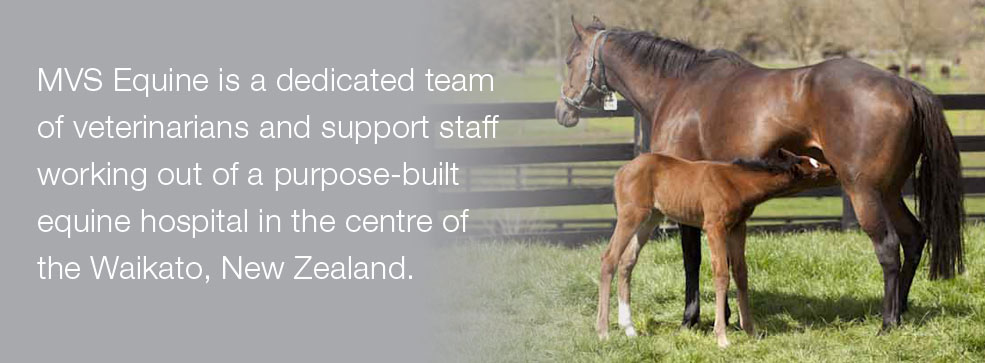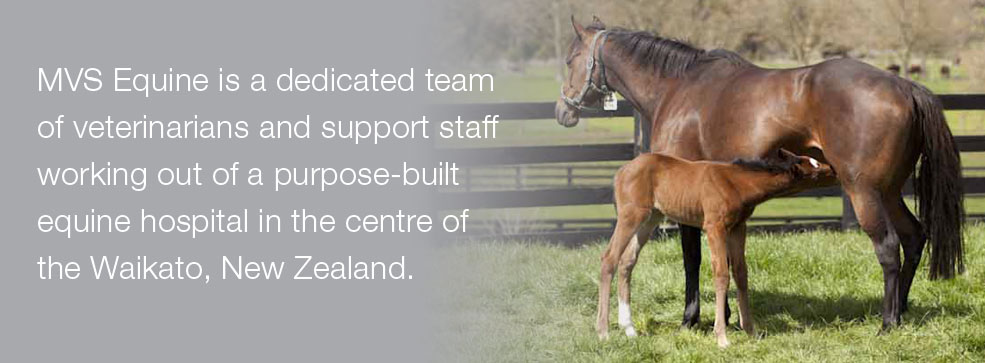Equine Laparoscopy
Equine Laparoscopy
September 13, 2015
Equine Laparoscopy
Barbara Hunter, DVM, MS, DACVS-LA
Specialist in Equine Surgery
Techniques in minimally invasive surgery have grown substantially in equine surgery over the last thirty years with laparoscopy, also known as abdominal ‘keyhole’ surgery, being one of the most recently developed techniques. Since its advent, the field of equine laparoscopy has grown rapidly and is now used as a routine approach for procedures such as removal of cryptorchid testicles in colts and removal of abnormal ovaries in mares with conditions such as ovarian tumors. Both procedures tend to yield excellent post-operative results with minimal post-operative pain and a rapid return to athletic function. Techniques have also been developed to substantially improve procedures associated with a high risk for catastrophic complications when done via open approaches. As well, new procedures have been developed to resolve problems that were previously not treatable due to lack of surgical access (eg: closure of small colon mesenteric rents and closure of the internal inguinal ring without castration in breeding stallions).
As a general description of the technique, laparoscopy involves insertion of a 10 mm laparoscope into the abdomen of the horse to allow viewing of the majority of the organs in the abdomen. How much of a view depends on the surgical approach taken.
Laparoscopy can be used both under general anesthesia and in the standing horse. Due to the time, cost and risk associated with general anesthesia, standing laparoscopic procedures have become considerably more common. In addition to increasing access to the upper two thirds of the abdomen, the minimally invasive nature of laparoscopy also has significant advantages. As a result of small incision size and minimal tissue trauma, laparoscopy is associated with decreased duration and severity of post-operative pain and decreased incidence of post-operative incisional complications. The exact location of the ‘keyhole’ incision in the abdomen varies with the purpose of the surgery. Below I have outlined the surgical details of some of the most common laparoscopic surgeries we do along with the advantages associated with each application.
Standing Laparoscopic Cryptorchidectomy or ‘Rig’ Surgery
As many people are aware, “rigs” can retain one or both of their testicles in their abdomen. Traditionally horses are placed on their back under general anesthesia and these testicles are removed via an open surgical approach through either the inguinal ring or a hole cut in the abdominal wall near the inguinal ring. Recovery time is 3-4 weeks. Using standing laparoscopy, three small incisions (1-2 cms) are made in the flank of each affected side and the testicles are located with the laparoscope (Figure 1) then removed through one of the flank incisions.
![]()

Figure 1: Laparoscopic view of a cryptorchid testicle
The visualization achieved with the laparoscope and use of the Ligasure device to seal spermatic vessels while cutting the spermatic cord within the abdomen (Video) allows for decreased tissue trauma and excellent hemostasis. This results in decreased intra and post-operative hemorrhage, less post-operative swelling and minimal post-operative pain. Due to the minimally invasive nature, laparoscopy allows for a more rapid return to function following surgery. Horses can generally be turned out in a small yard within 48 hours of surgery and most athletic horses can return to full training in 7-10 days.
.
Video: Laparoscopic view of cryptorchid testicle and transection of spermatic cord with Ligasure.
![]()
Standing Laparoscopic Delivery of PGE2 to Oviducts
This procedure is performed on mares that are infertile as a result of blocked oviducts. The laparoscope is passed into the abdomen through a small (1cm) incision in the flank on the side of the blocked oviduct. A second incision is placed near the first to allow insertion of a laparoscopic needle. Prostaglandin E2 is injected via the laparoscopic needle onto the surface of the oviduct.
This surgery should be performed during the spring/summer when mares are cycling. In cases where oviduct blockage is the primary reason for infertility, this procedure has a very good success rate.
Hand Assisted Laparoscopic Removal of Large Pathological Ovaries
Mares can develop large, abnormal ovaries for a variety of reasons, however the most common reason is growth of a granulosa thecal cell tumour (GCT) within an ovary. This is a benign tumour that can cause ovaries to grow to cantaloupe size or larger (Figure 1). Typically the tumorous ovary does not cause harm. However in some cases, the enlarged ovary can scar to surrounding organs, including intestine. If that occurs, there is some danger of developing colic secondary to abnormal bowel function.
The immediate problem typically associated with a GCT is infertility. Even though it is most common for only one ovary to be affected, the over abundance of hormones produced by the abnormal ovary inhibits the growth of follicles in the normal ovary. This prevents normal cycling which results in infertility. In some cases, affected mares may show stallion like behavior, or they may stay in season constantly, or most commonly, they fail to cycle at all.
Due to the size of affected ovaries, the blood supply is typically quite substantial. Prior to laparoscopy, the most common method of removing large abnormal ovaries was via a ventral midline incision (similar to a colic surgery) or through a large incision in the flank. The ovarian blood supply would be tied off with suture prior to removal of the ovary, but due to the size of the blood supply and limited surgical access, placement of these sutures was difficult. Slippage of sutures can occur in up to 50% of cases with catastrophic hemorrhage resulting in the death of the mare in such cases. Using the laparoscope, the blood supply is considerably easier to visualize and can be sealed closed and cut with minimal risk for hemorrhage using the Ligasure device. The ovary is removed using a hand-assisted technique. Following transection of all of its attachments, the ovary is placed into a sterile bag within the abdomen, cut into small pieces, then removed through a hole in the flank that is just large enough for the surgeon’s arm. Mares can typically return to work 2 months following surgery and return of normal ovarian cyclicity from the remaining ovary usually occurs within 12 months.
![]()
Figure 1: Large ovary with Granulosa Thecal Cell Tumour with associated blood supply.
![]()
Other Procedures
Laparoscopic exploration of abdomen for chronic colic
Uterine Imbrication as an adjunct treatment for infertility
Closure of internal inguinal rings in stallions to prevent repeat scrotal herniation of intestine
Laparoscopic removal of bladder stones
Laparoscopic assisted nephrosplenic space ablation





